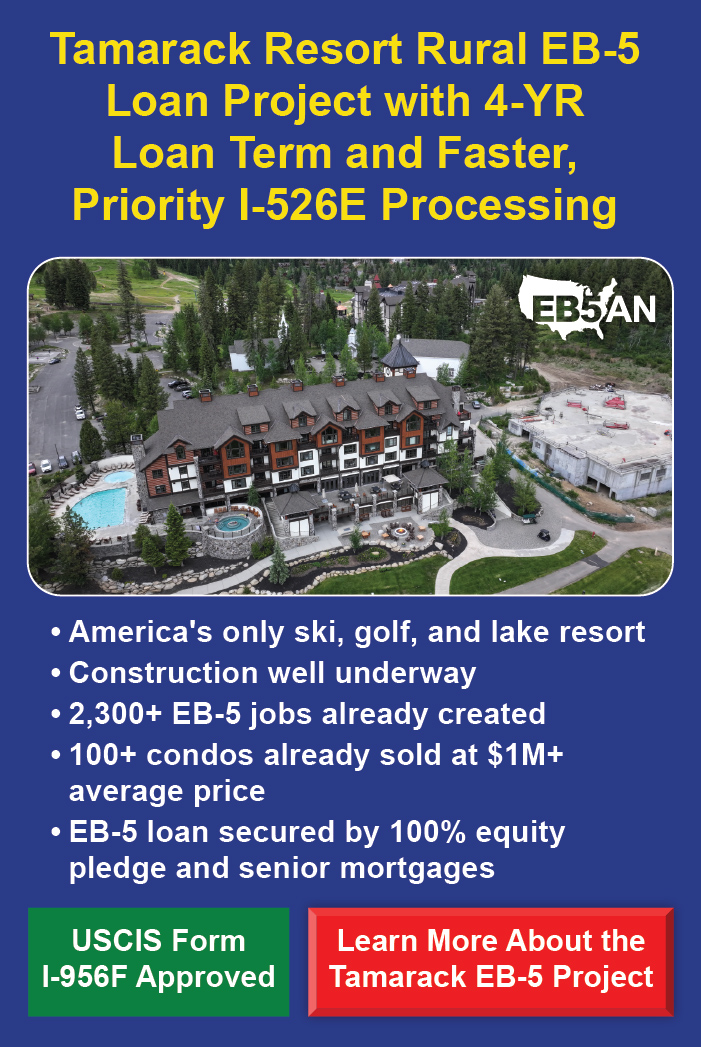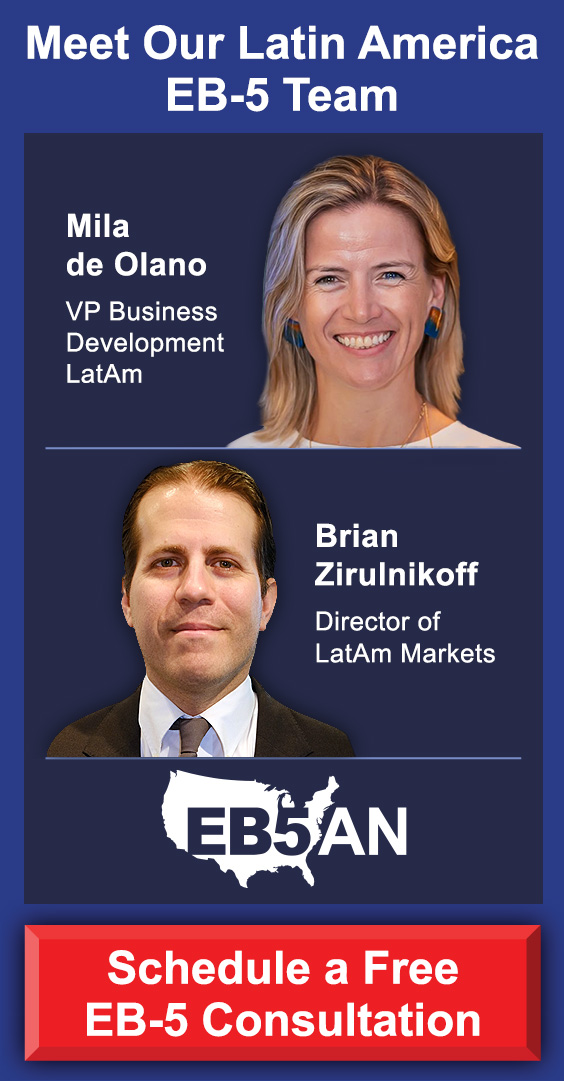Investing in an EB-5 TEA project is one of the fastest and most affordable routes to U.S. permanent residency.
Investing in a TEA EB-5 project can be a strategic and more cost-effective pathway to obtaining U.S. permanent residency.
Within the EB-5 program, there are many ways to invest and obtain citizenship. One popular method is through targeted employment areas (TEAs). This investment route has a number of benefits for foreign nationals and may even help you immigrate to the U.S. faster.
In this article, we will explore why you should consider investing in a TEA project, the benefits of these projects, and the key steps involved in obtaining TEA status.
Read on to discover how TEAs can open doors to a Green Card and help you secure your future in the U.S.
A Brief Overview of The EB-5 Visa Program
The EB-5 Regional Center Program was established in 1992 to help applicants obtain a U.S. permanent resident visa—also known as a Green Card—when they make a qualifying capital investment.
To begin the EB-5 process, investors file Form I-526E. The United States Citizenship and Immigration Services (USCIS) will use this petition to determine compliance with EB-5 Immigrant Investor Program regulations
The investor’s place of residence impacts the process at the time of I-526E approval. Those outside the U.S. must go through consular processing, and obtain an immigrant visa to enter the U.S, while those inside the U.S. file Form I-485.
Once approved, the applicant is granted conditional residency of two years, with the issue of a conditional green card. After this period, the investor files Form I-829 to remove the conditions on their residency and receive their permanent resident status or Green Card.
What Are EB-5 Targeted Employment Areas (TEAs)?
TEAs are typically areas that have been determined by the U.S. Government to be in need of economic growth and employment. The EB-5 program targets these areas to bring jobs and development to the local community.
One of the most appealing aspects of the EB-5 Immigrant Investor Program is the reduced minimum investment amount needed for a commercial enterprise located in a TEA.
While an EB-5 new commercial enterprise (NCE) has a minimum capital investment threshold of $1,050,000, TEA capital investments require a much lower amount of $800,000. This option provides a more affordable option for investors.
A TEA also benefits the U.S. government by creating jobs and stimulating the economy in the regions that need it the most.
Types of TEAs
There are two kinds of TEAs: rural and high unemployment. There are specific sets of criteria that locations must meet in order to become a TEA.
Rural areas
- Rural areas can’t be located within a metropolitan area as designated by the Office of Management and Budget.
- These areas can’t be within the outer boundary of any city or town having a population of 20,000 or more based on the most recent decennial census of the United States.
High-unemployment area
- An area must have an unemployment rate of at least 150% of the national average rate.
- It is possible for an area to qualify as both a rural and high-unemployment TEA.
How TEAs Benefit the EB-5 Immigrant Investor Program
TEAs need economic stimulation, growth, and job creation. As part of its main objectives, the EB-5 Immigrant Investor Program works to provide these areas with investment capital and jobs.
EB-5 investors who choose TEA-based commercial enterprises can also enjoy a significantly reduced minimum capital investment. This makes an EB-5 capital investment a much more practical option for foreign nationals and may encourage investment.
One of the main requirements for a successful EB-5 capital investment includes job creation. Every EB5 commercial enterprise must create at least 10 full-time jobs per investment. As a result, TEA status also promotes employment across the United States.
How EB-5 TEAs Can Result in Faster Immigration
Not only are TEAs more affordable, but they can also provide a faster route to obtaining permanent resident status through the EB-5 Immigrant Investor Program.
This is because factors like priority processing and visa set-asides, allow investors to enjoy a quicker immigration process compared to non-investor immigrants.
With new regulations on visa set-asides, investors who qualify for TEA status can also qualify for an EB-5 visa and priority processing. Once an investor gets their Form I-526E approval, they can receive their visa regardless of their country’s demand or availability.
An EB-5 investor in a TEA project can also obtain a U.S. Green Card much faster than they would otherwise, because of these processing benefits.
How To Demonstrate a Project’s TEA Status
An investor wishing to benefit from the lower investment amount. must invest in a project or business venture located in a TEA. The project or business venture’s I-956F filing must include evidence of its TEA status.
USCIS allows the use of approved methodologies to calculate or determine an area’s TEA qualification, which must be based on the most recent published data.
If the provided evidence does not meet USCIS standards at the time of filing the I-956F petition for the project or business venture, the investor will also not be eligible for TEA status or the reduced capital investment threshold at the time of submitting their I-526E petition.
In this section, we will cover the evidence USCIS requires to prove TEA status.
What kind of evidence is needed?
Proving rural area status to USCIS is relatively straightforward.
As mentioned before, a rural area is any area other than an area within a metropolitan statistical area (as designated by the Office of Management and Budget) or within the outer boundary of any city or town having a population of 20,000 or more based on the most recent decennial census of the United States.
Proving TEA status based on a high unemployment rate can be less straightforward.
According to USCIS, the evidence needed to prove an area’s high unemployment rate includes the following:
- The location of the project or business venture.
- A map that clearly shows the census tract or tracts included in the proposed TEA.
- Statistics demonstrating the average unemployment rate of the TEA and the national average.
- The sources of all statistics used to demonstrate the national average and local unemployment rates.
High-unemployment TEA designation requires data on both the area’s unemployment rate and the national unemployment average. Both statistics must also be from the same source and cover the same time period.
High-unemployment TEA calculation methods
TEA eligibility can be determined using the ACS methodology utilized by the U.S. Census Bureau, specifically the American Community Survey (ACS) five-year average data by census tract.
The census share methodology relies on both ACS five-year census-tract data and Bureau of Labor Statistics (BLS) annual average unemployment data.
Remember that unemployment rate data for an EB5 project’s area and the national average must come from the same source.
Obtain Your U.S. Green Card with EB5AN
Investing in an EB-5 TEA project is not just a financial decision; it’s a strategic move toward achieving U.S. permanent residency faster.
As the EB-5 Immigrant Investor Program continues to evolve, the emphasis on TEAs remains strong, offering investors an efficient and affordable route to realizing their American dream.
As a leader in the EB5 capital investment industry, EB5AN has helped thousands of investors secure U.S. residency. Foreign nationals interested in the program can take the next step by booking a call with EB5AN to learn more.









